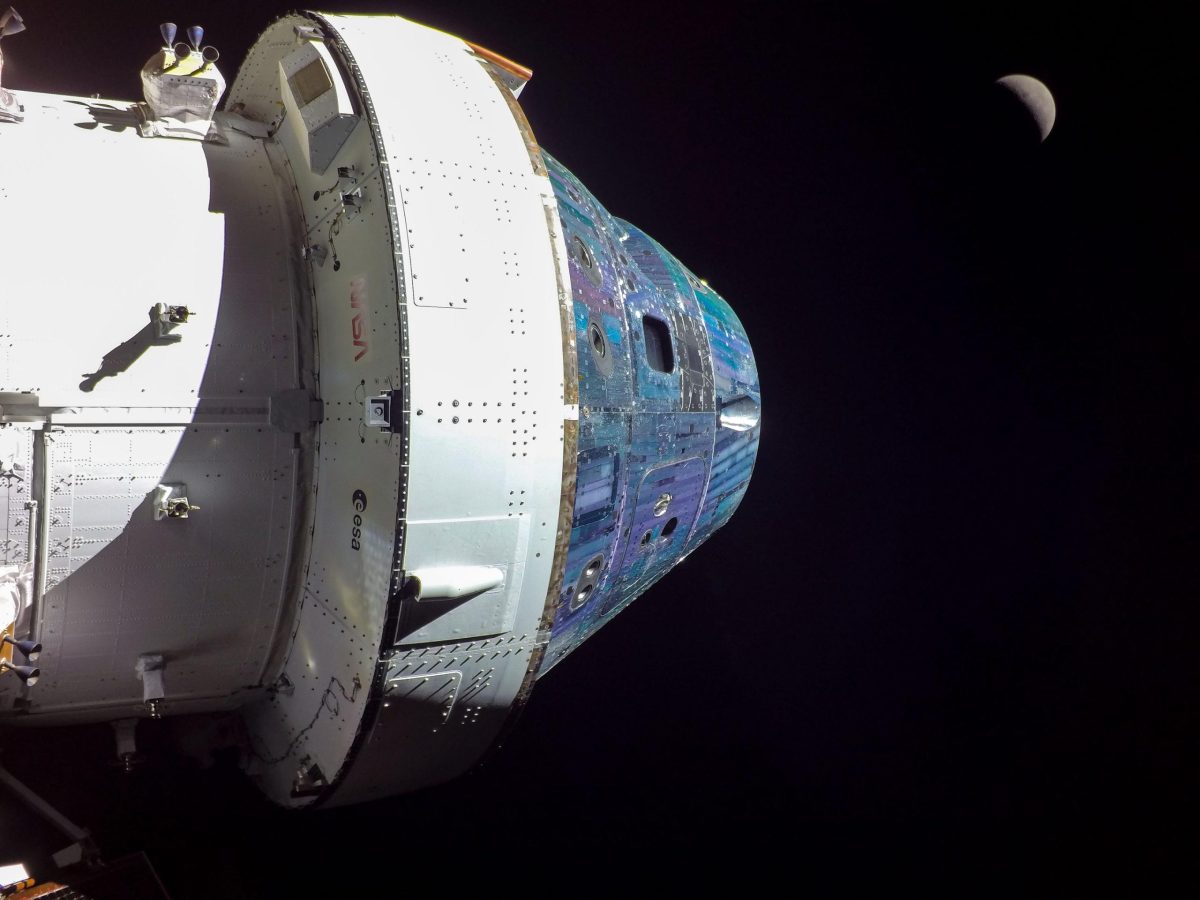On Flight Day 8, NASA’s Orion spacecraft remains two days away from reaching its distant retrograde orbit. The Moon is in view as Orion snaps a selfie using a camera mounted on one of its solar array at 10:57 p.m. EST. Credit: NASA
NASA’s Orion spacecraft is now about one day away from entering into a distant retrograde orbit around the Moon. The orbit is “distant” in the sense that it’s at a high altitude approximately 50,000 miles (80,000 km) from the surface of the Moon. Due to the distance, the orbit is so large that it will take the spacecraft six days to complete half of a revolution around the Moon before exiting the orbit for the return journey back to Earth.
During the last day in the transit to distant retrograde orbit, flight controllers performed a third in a series of planned star tracker development flight tests relative to the Sun, with a fourth planned for tomorrow. Star trackers are a navigation tool that measure the positions of stars to help the spacecraft determine its orientation. In the first three flight days, engineers evaluated initial data to understand star tracker readings correlated to thruster firings.
The spacecraft completed its sixth outbound trajectory correction burn at 3:52 p.m. CST, firing the European Service Module’s auxiliary engines for 17 seconds to propel the spacecraft at 8.9 feet per second. This is the final trajectory correction before entering distant retrograde orbit. When in lunar orbit, Orion will perform three orbital maintenance burns to keep the spacecraft on course.
On the eighth day of the Artemis I mission, a camera mounted on one of Orion’s solar arrays captured the spacecraft and the Moon as it continued toward distant retrograde orbit. Credit: NASA
Overnight, engineers will begin a 24-hour test of the reaction control system engines to evaluate engine performance for standard and non-standard thruster configurations. This test will provide data to inform procedures and ensure that the reaction control thrusters can control Orion’s orientation in an alternate configuration if there is an issue with the primary configuration.
Just after 1:42 p.m. CST on November 24, Orion was traveling 222,993 miles (358,872 km) from Earth and 55,819 miles (89,832 km) from the Moon, cruising at 2,610 miles per hour (4,200 km per hour).
NASA Television coverage of the distant retrograde orbit insertion burn is scheduled for 4:30 p.m. EST on Friday, November 25. The burn is scheduled to take place at 4:52 p.m.
Share your story or advertise with us: Whatsapp: +2347068606071 Email: info@newspotng.com












